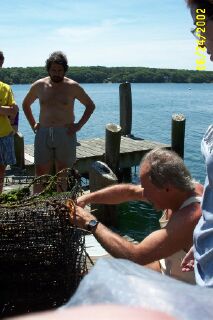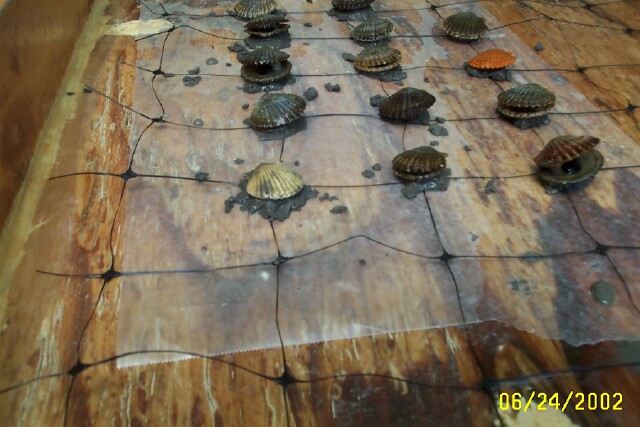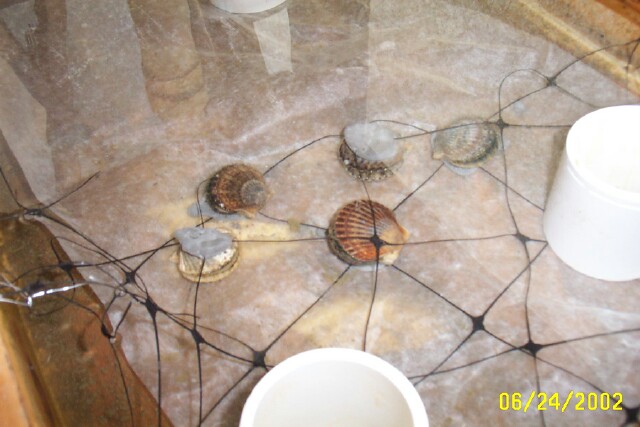Sample
preparation task 5, by E. Sichel on June 24, 2002
Assistance
provided by Ann Bodio, student technician, and Rick Karney,
director of the MVSG.

Rick
Karney harvests some live scallops for testing Ceramicrete
as an adhesive on live shellfish. Ceramicrete was developed
by Dr. Arun Wagh of Argonne National Laboratory, who donated
the Ceramicrete for us to test on shellfish.

Shown
are live scallops in air on the benchtop, attached to plastic
netting with Ceramicrete.
Three
trials of Ceramicrete were made. In all cases, the Ceramicrete
powder was mixed with a dilute solution of phosphoric acid
to speed the setting time. Reagent phosphoric acid was diluted
to 50 weight percent and then 10 percent of the mixing water
was replaced by this phosphoric acid solution.
- Trial
1: 100 grams of Ceramicrete powder was mixed with 51
grams of dilute phosphoric acid. The Ceramicrete was stirred
for about 20 minutes when it suddenly began to harden. It
was quickly applied to wet scallops and netting.
The scallops sat on the bench top in air for 5 minutes,
as shown in the photograph above. During this time, the
scallops clapped their shells, trying to escape. Thus, the
Ceramicrete was not undisturbed while it hardened. After
5 minutes in air, the shellfish were immersed in seawater.
The Ceramicrete immediately dispersed in the water and the
test was a failure.
- Trial
2: 50 grams of Ceramicrete and 25 grams of dilute phosphoric
acid were mixed. After stirring for 10 minutes, Ceramicrete
was applied to scallops that were patted dry with paper
towel. Ceramicrete was also applied to the plastic netting
and the scallops were set in place. They dried in air for
45 minutes and then the scallops and netting were immersed
in seawater. The test failed immediately. The scallops came
loose from the netting.
- Trial
3:The leftover Ceramicrete from Trial 2 had been stirred
for 35 minutes, but had not hardened. Additional dry Ceramicrete
powder was added to make a thick paste, which began to set
up. A third batch of scallops were blotted dry with towels;
Ceramicrete was applied to them and to the netting and the
scallops were set on the plastic netting in air while the
Ceramicrete hardened. The scallops were in air for 20 minutes,
and then immersed in seawater as shown below. The Ceramicrete
held. The test was an initial success.

|

